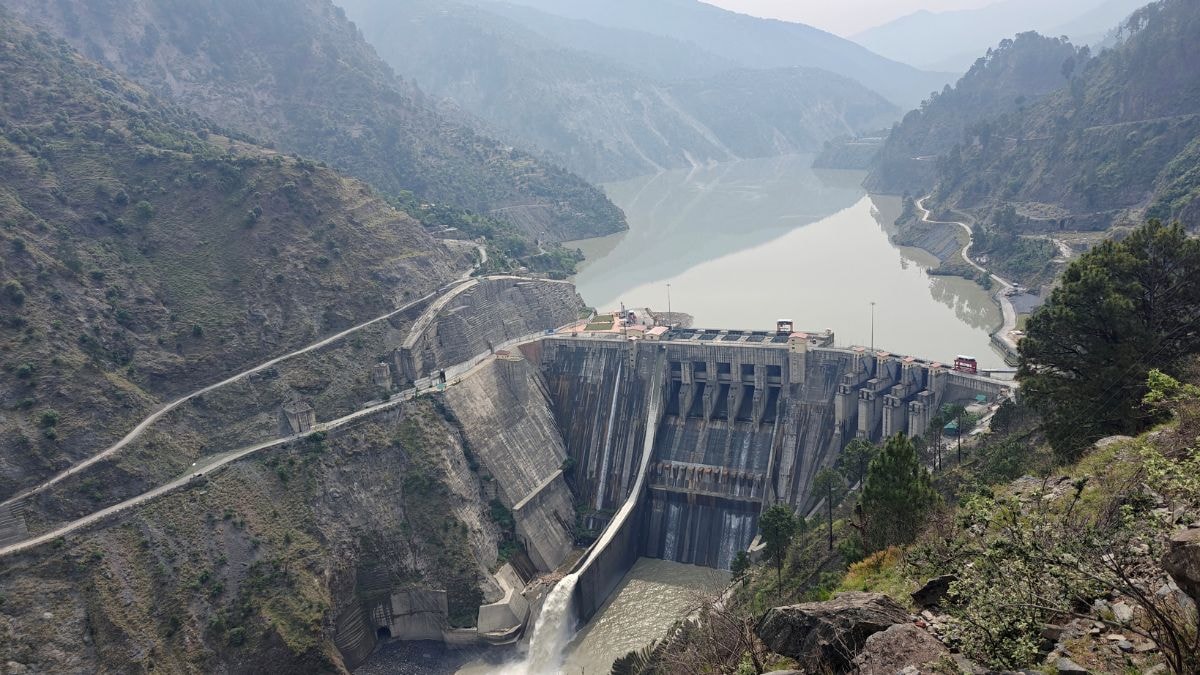India is planning to build a 113 km-long canal to redirect the surplus flow of the three western rivers of the Indus water system from Jammu and Kashmir to Punjab, Haryana and Rajasthan. A feasibility study is reportedly underway. This comes amid New Delhi’s efforts to utilise its share of waters from the Indus river system, preventing the flow to Pakistanread more
India has intensified efforts to better utilise its share of the waters from the Indus River system. As per reports, New Delhi is conducting a feasibility study to construct a 113 km-long canal to divert the surplus flow of the three western rivers of the Indus system from Jammu and Kashmir to its other northern states.
The move comes amid tensions between India and Pakistan. After the April 22 Pahalgam massacre, New Delhi suspended the decades-old Indus Waters Treaty (IWT). India blames Pakistan for the terror attack, a charge denied by Islamabad.
Prime Minister Narendra Modi previously vowed that Pakistan would not get water from rivers that India controls. “Pakistan will have to pay a heavy price for every terrorist attack … Pakistan’s army will pay it. Pakistan’s economy will pay it,” Modi said at a public event in Rajasthan in May.
Let’s take a closer look.
India to build 113 km-long canal
India is carrying out a feasibility study to build a 113 km-long canal for redirecting surplus flows from Jammu and Kashmir to Punjab, Haryana and Rajasthan.
As part of New Delhi’s plan for inter-basin water transfers, the canal will divert water from the Indus River system, reported Times of India (TOI).
According to the Indus Waters Treaty (IWT), India controls the eastern rivers of Sutlej, Ravi and Beas, while Pakistan controls the western rivers — Jhelum, Chenab, and Indus. The deal was brokered by the World Bank between New Delhi and Islamabad on September 19, 1960.
The proposed canal will link Chenab with Sutlej, Ravi and Beas rivers, ensuring the full use of the eastern rivers under the Indus Waters Treaty. The step will also facilitate India to utilise its entire allocated share in the western rivers, stopping the additional flow of water to Pakistan, as per the newspaper report.
The plan is in its initial stages, with the construction of the canal expected to be finished in the next three years, sources told NDTV.
It is also being mulled to connect the canal to the Yamuna River, which would increase the length of the structure to 200 kilometres. If this happens, the water can then be transported to Gangasagar in Rajasthan via Yamuna.
On Saturday (June 14), Union Home Minister Amit Shah said, “Indus waters will be taken to Rajasthan’s Ganganagar through canals within three years.” He further warned that Pakistan will be left “craving for every drop of water”.
The Chenab-Ravi-Beas-Sutlej link could connect the existing canal structures at 13 locations across Jammu, Punjab, Haryana and Rajasthan, carrying water to the Indira Gandhi canal (Sutlej-Beas), TOI reported, citing sources.
ALSO READ:
After Baglihar, India may halt water flow from Kishanganga dam: Will Pakistan run dry?
How the canal will benefit Indian states
The proposed canal, which will divert water from J&K, is expected to benefit India’s northern places, such as Haryana, Punjab, Delhi and Rajasthan.
“This internal reallocation would strengthen India’s water resilience in the face of climate variability and changing rainfall patterns,” Uttam Sinha, senior fellow Manohar Parrikar Institute for Defence Studies and Analyses (IDSA), told TOI.
India tightens control on Indus water system
After putting the
Indus Waters Treaty of 1960
“in abeyance”, India has taken several measures to prevent the flow of water from the country to Pakistan.
India has halted water flow to Pakistan through the Jammu and Kashmir’s Baglihar dam on the Chenab River. It also began flushing and desilting of the reservoir of the Salal dam, the run-of-the-river hydroelectric project on the Chenab River.
Labourers walk on a bridge near the 450-megawatt hydropower project located at Baglihar Dam on the Chenab river which flows from Kashmir into Pakistan, at Chanderkote, about 145 km north of Jammu October 10, 2008. File Photo/Reuters
India is mulling extending the length of the Ranbir canal on the Chenab to 120km.
“There is also a proposal to double the length of the existing Ranbir canal, drawing water from the Chenab, from 60 km to 120 km. Efforts will also be made based on the feasibility report to use Pratap canal to its full capacity,” an official was quoted as saying by TOI.
This comes after PM Modi directed officials to speed up planning and execution of projects on the Chenab, Jhelum and Indus rivers — which come under Pakistan’s control, Reuters reported last month.
India is reportedly considering expanding the capacity of hydropower projects in Jammu and Kashmir, from 3,360 megawatts (MW) to 12,000 MW.
The Centre also plans to revive the multipurpose project on the Ujh river in J&K for irrigation and hydro power to better utilise Indus river waters.
With inputs from agencies
